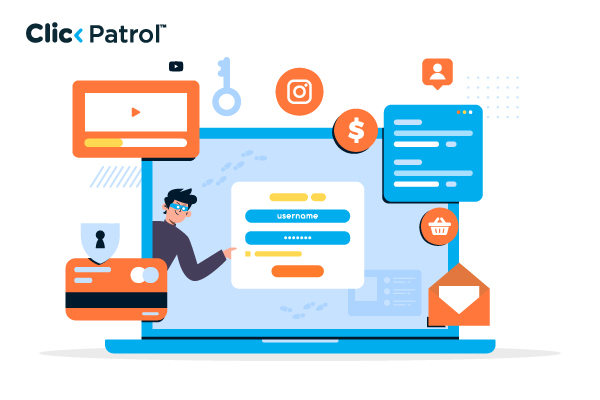
Marketing transparency in 2025: How to build trust and drive long-term customer loyalty
Abisola Tanzako | Jun 26, 2025

Table of Contents
- Why transparency in marketing drives brand trust and sales
- The benefits of transparent marketing
- 6 Proven ways to improve transparency in marketing
- Examples of transparent marketing campaigns
- Challenges of transparent marketing
- The role of technology in transparent marketing
- Measuring the impact of transparent marketing
- Improving ROI through marketing transparency
- FAQs
88% of consumers say transparency from brands is more important than ever. At the speed of contemporary connectivity, consumers are better informed, more critical, and more empowered than ever.
With consumers having unlimited access to information today, brands need to be authentic and truthful in their marketing. Marketing transparency is now necessary for brands that want to survive the era of awareness.
Transparent marketing is not just a marketing buzzword; it builds a foundation of trust, fosters meaningful customer interaction, and leads to long-term loyalty.
This article explores what transparency means in modern marketing, its business impact, and how to implement it across touchpoints.
Why transparency in marketing drives brand trust and sales
Marketing transparency involves the dedication to candid and truthful communication of a brand’s products, services, values, and practices to consumers.
This entails transparently communicating the facts regarding pricing, origin, processes, and even, when errors occur, without resorting to misleading claims or marketing ploys.
Transparent marketing is concerned with veracity and actuality rather than creating a perfect image to build genuine customer relations.
The benefits of transparent marketing
Through transparency in marketing, companies can elevate their reputation with consumers and boost revenue. As shown by statistics, some of the key benefits include:
1. Increased consumer trust: Trust is the foundation of successful brand and consumer associations.
An 88% market share of consumers is more likely to trust brands that share transparent information on their sourcing, pricing, and business practices, as evidenced by a 2024 Forbes finding.
Frank honesty communicates reliability to consumers when they make purchases.
An illustrative case is Patagonia, which became a pioneer of transparent marketing by admitting in-depth information such as the details of its sustainable sourcing and environmental stewardship initiatives.
2. Higher customer retention: The relationship between transparency and customer retention is positive. A recent Statista study found that 79% of consumers trust brands more when they are transparent about their operations.
A steady practice of honest communication helps convert early adopters into long-term brand ambassadors.
Everlane does a good job of separating itself using the “transparent pricing” approach, deconstructing the costs behind materials, labor, and shipping for all their products. This strategy sells to customers, significantly retaining customers.
3. Competitive advantage: Transparency can give brands a compelling selling point in a busy market. Forbes’ data states that 65% of consumers prefer brands that are made to be transparent rather than brands that give major importance to advertising strategies.
Valuing authenticity through open communication gives brands a competitive advantage and attracts discerning customers.
4. Improved crisis management: Every business makes mistakes, and transparency can mitigate the effects. If they admit mistakes and convey the right solutions, the brands can take advantage of an impending crisis to demonstrate their accountability.
KFC eased a chicken shortage in the UK through a funny and transparent apology campaign, which contributed to rebuilding customer confidence.
6 Proven ways to improve transparency in marketing
The move towards transparent marketing begins with developing a plan that melds your brand’s values with what your audience most values. Follow these specific steps to begin your journey to transparent marketing:
1. Market your products and services to your audience as they are: Stop promoting lavish product benefits or things that cannot be proven. On the other hand, give specific, accurate facts about what value your customers receive.
If a product fails to meet expectations, express them in reality and describe your actions to improve it.
Case study: Glossier, a beauty brand, officially lists real, honest reviews from its customers (both the good and the bad reviews) on its website.
Transparency in your products and services will increase trust in your brand, making buying simpler for the customer.
2. Share your pricing breakdown: Uncertainty surrounding fees and pricing is an important challenge for consumers. Explain your cost structure to customers, explaining everything that they might incur.
A 2023 Statista survey shows that 68% of shoppers dislike surprise fees, and clear pricing information goes a long way to solving this problem.
3. Communicate your values and practices: Explain your brand’s mission, core values, and everyday operation to your audience. This may involve knowledge of sustainability, ethical sourcing, or labor practices.
A study featured on Forbes estimates that 70% of consumers expect brands to explain their environmental footprint fully.
4. Admit mistakes and take responsibility: Be generous in admitting mistakes and willing to accept responsibility. Open feedback can support the trust established with your audience and demonstrate that you take accountability seriously.
This social media management-savvy company will publish its data breaches and recovery efforts while winning praise for its openness.
5. Engage authentically on social media: Social media is a powerful communication tool for open marketing strategies. Use it to share stories from within the organization, resolve customer queries, and respond to feedback.
Statistics indicate that 62% of consumers think brands should respond to social media complaints within 24 hours.
6. Use data to back claims: Make sure your claims have evidence of confirmed data. For example, refer to expert data or show known eco-labels to prove your eco-friendly statements. According to Forbes, 76% of consumers lean more towards believing in brands that back their claims with data.
Examples of transparent marketing campaigns
Examples of transparent marketing campaigns include:
- Everlane provides a personalized cost experience with its “Choose What You Pay” system, which allows customers to see cost information and select an amount perfect for their budget, increasing trust and flexibility.
- Wendy’s engages its customers on Twitter playfully and transparently, ensuring all feedback and news is genuine and welcoming.
- TOMS Shoes is straightforward because it reveals that each purchase made as part of the “One for One” program pays directly into charitable organizations. Such disclosure reinforces the story consumers associate with the brand.
Challenges of transparent marketing
There are benefits to transparent marketing, but it also comes with its suite of challenges:
- Vulnerability to criticism: Too much disclosure will increase stakeholder questioning and appraisal. Giving away details of your supply chain may create loopholes that can be used against you competitively.
- Balancing transparency and privacy: Balance a little to leak nothing too sensitive about proprietary data or customer privacy.
- Maintaining consistency: Transparency requires ongoing commitment. Inconsistent communication can erode trust.
- Managing expectations: Excessive transparency could create customer expectations that are unrealistic to fulfil.
The role of technology in transparent marketing
Modern technology plays a very important role in ensuring transparent marketing strategies. Blockchain solutions are effective for authenticating details in the supply chain, and AI analytics provide brands with useful consumer insights that will allow them to create more transparent messaging.
For instance, Walmart uses IBM’s Food Trust blockchain to provide customers with verifiable information about its supply chain. Social listening applications allow marketers to monitor customer opinions and respond promptly if necessary.
According to a 2024 Statista survey, 55% of brands adopt technology to make their marketing more transparent.
Measuring the impact of transparent marketing
Monitor the following metrics to determine how transparent marketing has performed:
- Customer trust scores: Conduct surveys to measure shifts in customers’ trust levels before and after any transparency efforts are implemented.
- Engagement rates: Monitor social media engagement and website analytics to gauge consumer interest.
- Retention rates: Monitor the frequency of recurring purchases to establish loyalty rates.
- Net promoter score (NPS): Determine the probability of clients recommending your brand to others. According to Forbes, companies that are more transparent tend to increase their NPS by 20% compared to their less transparent counterparts.
Improving ROI through marketing transparency
With consumers demanding authenticity and accountability like never before, transparency in marketing is not a matter of choice but of necessity.
Whereas openness regarding offerings, pricing, core values, and slips of the tongue is adopted, trust and growth in customer loyalty are built, and businesses are positioned ahead of rivals.
Transparent marketing backed by data provided by Forbes and Statista reveals a stunning 88% increase in trust and a 79% rise in loyalty for authentic and transparent firms.
Full and verifiable information supplemented by genuine engagement on social channels allows open marketers to create positive connections for both the company and customer. Since authenticity is necessary nowadays, committing to transparency will make your brand grow fiercely.
FAQs
Q.1 Why is marketing transparency important?
Transparency is important because it creates trust, boosts loyalty, and aligns with consumer values. According to Statista, 86% of consumers say brand transparency is becoming more important.
Q. 2 How do brands practise transparent marketing?
Brands become transparent through product honesty, price transparency, communication of values, admitting mistakes, and genuine social media interaction.
Q. 3 What are the dangers of transparent marketing?
Risks include criticism, balancing privacy with transparency and consistency, and handling customer expectations. Maintaining a well-outlined policy of transparency can lessen all these risks.





